#amosu
Text

At ChòpnBlọk in Houston, customers line up for dishes like the Golden bowl, which includes jollof rice with a Creole twist, plantains, roasted cauliflower and brussels sprouts served with a vegan curry.Credit...Michael Starghill Jr. for The New York Times
West African Chefs Take a Page From the Fast-Casual Playbook
For these second-generation business owners, the familiar format offers a gateway to a wider audience.
At ChòpnBlọk in Houston, customers line up for dishes like the Golden bowl, which includes jollof rice with a Creole twist, plantains, roasted cauliflower and brussels sprouts served with a vegan curry.Credit...Michael Starghill Jr. for The New York Times
Oct. 3, 2022
HOUSTON — At POST Houston, a popular food hall, the lines stretch long for ChòpnBlọk, where the Nigerian American owner Ope Amosu offers a familiar customizable template — rice, vegetables, protein — that are deeply influenced by his West African pride, and his London-born, Houston-raised identity.
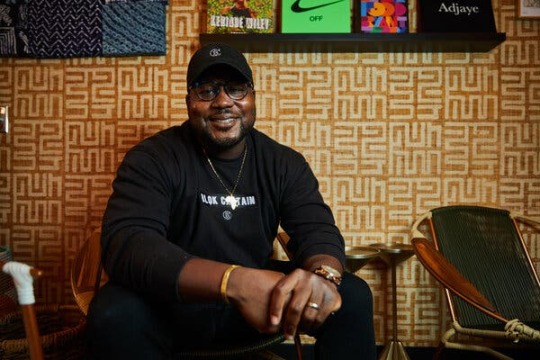
Take the Golden, a nod to the Gold Coast of West Africa — and to Mr. Amosu’s stint as a prep cook at Chipotle while still working as a corporate sales executive. The hearty meal includes smoky jollof rice with a Creole twist, plantains, roasted cauliflower and brussels sprouts, and comes with a vegan honey bean coconut curry that’s at once sweet and alluringly tangy. To top it all, customers can choose from various proteins marinated in Cameroon pepper.
The traditional West African restaurants that dot southwest Houston are cozy, dimly lit spaces and often family-owned. But at restaurants like ChòpnBlọk, which regularly appears on the city’s dining lists and is lauded on social media by celebrities like the “Insecure” star Yvonne Orji and the rappers Jidenna and Wale, the West African flavors and staples are quicker, more casual and — their owners argue — more accessible to non-African diners.

“We’re not trying to convince people our food is good or worthy — we already know that it is,” Mr. Amosu said. “I am, however, trying to tell our story and welcome people in who may be nervous about going to a place that feels a bit unfamiliar.”
In food halls, strip malls and shopping centers across the United States, fast-casual West African restaurants are proliferating, and the second-generation owners behind them are at once showcasing the range of these cuisines and debunking reductive myths about them.
At the Senegalese chef Pierre Thiam’s restaurant Teranga in New York City, deeply flavored customizable grain bowls help to counter racist Western perceptions that can diminish the value of the region’s cuisine.
“I hope that it helps dispel the lies that make you think of Africa as a continent of scarcity,” Mr. Thiam said. “There’s so much abundance, and there’s so much creativity that’s coming from the continent, and we get to show them that story through our food.”
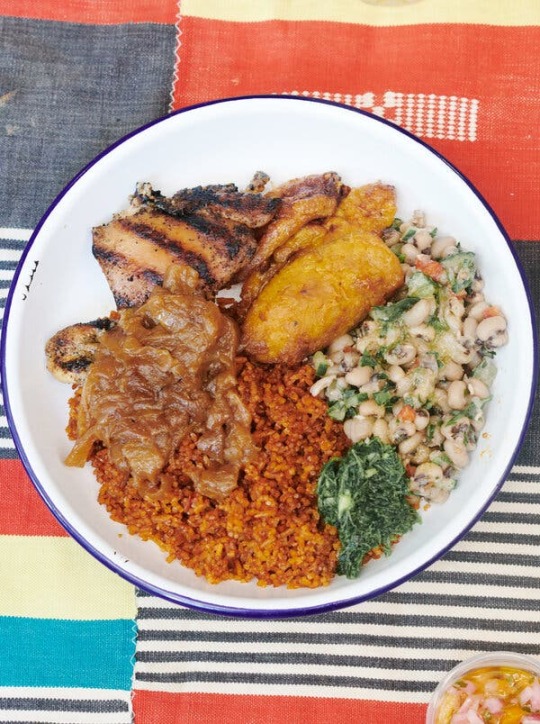
The fast-casual model allows West African chefs to preserve the region’s classic flavors as well as incorporate elements of their American upbringings in a format that is recognizable to diners less familiar with the cuisine.
“We’re creating a gateway to West African food,” said Olumide Shokunbi, the owner of Spice Kitchen in Brentwood, Md.
Like Mr. Amosu, Mr. Shokunbi attended the school of Chipotle — one of the nation’s best examples of fast-casual success. During college, he began working at a Chipotle franchise on the side as he explored opening his own business.
His Spice Kitchen adopts some central components of the fast-casual model: biodegradable serving bowls, customizable meals and a varied interpretation of storied cuisines. Since it opened last fall, the restaurant has offered salmon and shrimp alongside suya — Nigerian seasoned, skewered and grilled meats — and sides like spinach efo riro, jollof rice and grilled corn.


At Suya Suya West African Grill in Philadelphia, the owner Dera Nd-Ezuma, who developed a love for tacos after immigrating from Abuja, Nigeria, to New Jersey in 2007, takes a similar approach. To amplify traditional dishes like steak marinated in Nigerian yaji, Mr. Nd-Ezuma leans into his love of tacos and offers them filled with chicken and steak suya in the requisite brown to-go container.
“There’s a reason why our restaurants are finding success,” he added. “People want to experience this cuisine, and they want to do it in a way that feels comfortable.”
Having gone to many of the city’s more conventional Nigerian restaurants, Mr. Nd-Ezuma said he sometimes found the atmosphere intimidating.
“When I get to go to African restaurants and I try to order, the menu can be a little bit overwhelming, so I can only imagine what it’s like for non-Africans,” Mr. Nd-Ezuma said.
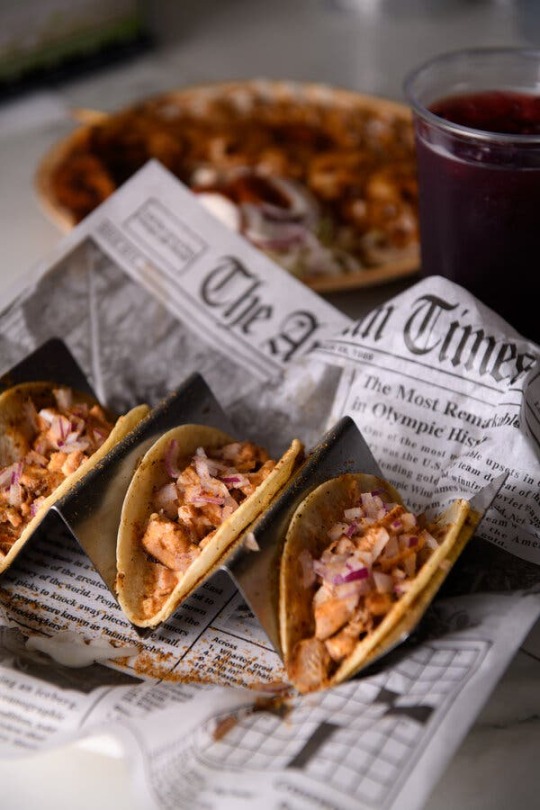
Citing a psychology construct called “openness to experience,” which is a high predictor of whether someone would try different cuisines, Germine Awad, a professor of psychology at the University of Michigan, said that it’s not how something is served that draws patrons in, but rather their natural curiosity levels.
The growing interest in West African food within the restaurant industry aligns with immigration trends. “The more folks that come, the higher the demand for food that’s authentic and a true reflection of that community,” Ms. Awad said.
In 1980, there were about 40,000 West African immigrants living in the United States, according to data from the Pew Research Center. By 2019, that number had grown exponentially, to 890,000. Nigerian immigrants are the largest group from the region, with the most sizable communities living in cities like Atlanta, Dallas, Houston, New York City and Washington, D.C.
The inevitable expansion of fast-casual West African restaurants will continue bringing these foodways to the forefront of American dining — an overdue change, Ms. Awad believes, in the culinary world.
“It’s not just enough to have these restaurants available to people, this cuisine has to be recognized for how complex and amazing it is,” she said. “That’s the true next step for expanding the idea of the average culinary experience in the United States.”
At Teranga in San Francisco (no relation to Mr. Thiam’s restaurant), the Senegalese chef Nafy Flatley-Ba creates dishes like chicken drumsticks marinated in baobab, tamarind and Dijon, a family specialty. Highlighting Senegalese flavors is a top priority for Ms. Flatley-Ba, but equally important is showing that women can and should play a leading role in contemporary West African dining.
“It hasn’t been easy to introduce fast-casual, yet super nutritious and healthy West African food,” Ms. Flatley-Ba said. “But I have been doing it.”

Some conventional West African diners might complain that the foods at these fast-casual restaurants isn’t traditional. But that’s not Mr. Amosu’s primary concern at ChòpnBlọk. The restaurant is a chance to revel in his heritage, by creating dishes that expand on the narratives of the region’s cuisines.
“Our stuff bangs, too, and everybody should know about it,” Mr. Amosu said. “There’s no reason why we should be so insular with the pride that we have for our culture.”
Authenticity and fast-casual service aren’t mutually exclusive, and Hema Agwu and Folusho Adeyemo, the Nigerian American owners of Brooklyn Suya in Crown Heights, Brooklyn, have no interest in compromising West African flavors to please Western appetites.

“It’s all about finding the balance of being both authentic and contemporary, you know, and open for a new audience,” Mr. Agwu said.
The menu reflects multiple cultures, integrating American ingredients like kale and avocado into their suya bowls, which can come with shrimp, chicken, eggplant or tofu marinated in suya spice. But the real common ground, Mr. Agwu said, comes on the side.
“Americans love sauce,” Mr. Agwu said. “We have to give the people what they want.”
#West African Fast-Casual Restaurants Are Finding Wider Audiences#West African#West African Food#Healthy Food
7 notes
·
View notes
Text
Court quashes N21bn money laundering charge against ex-Air chief, Amosu
The Federal High Court in Lagos on Tuesday quashed the N21.5bn money laundry charges preferred against a former Chief of Air Staff, Adesola Amosu, and two others by the Economic and Financial Crimes Commission.
The EFCC had on June 29, 2016, arraigned Amosu alongside a former Nigeria Air Force Chief of Accounts and Budgeting, Air Vice Marshal Jacob Adigun, and a former Director of Finance and Budget, Air Commodore Gbadebo Olugbenga, on a 26-count charge.
But they were re-arraigned before Justice Chukwujekwu Aneke in a 13-count amended charge marked FHC/L/280C/16 on money laundering to the tune of N21.5bn.
The defendants were prosecuted for alleged conspiracy and conversion of the funds belonging to the NAF to their personal use.
In a ruling on Tuesday on the application filed by the defendants asking the court to quash the charge brought against them, Justice Aneke granted their prayers, by upholding a preliminary objection challenging the jurisdiction of the court to entertain the case on the grounds that the defendants were serving officers of the military at the time
The judge held, “As officers of the armed forces, they ought to have been first investigated by the armed forces and tried rather than charging them before this court.”
He declared the investigation of Amosu dated January 30, 2015, null and void.
Justice Aneke also quashed the amended charges against the defendants.
Read the full article
0 notes
Link
0 notes
Text
0 notes
Text
This is my final message, goodbye..
My first year if college has come to an end so I've lost an amazing canvas to spred my mogus. Here are the last moguses of this semester.
The idea of the ccna rise of kingdoms alliance
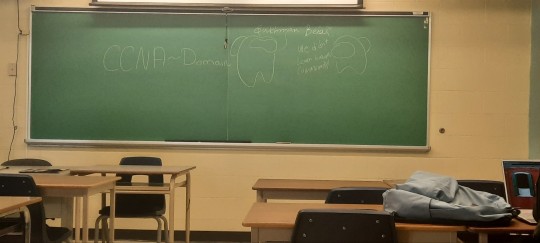
Scuffed mogus, there was a circle and I edited it

Ending of our Cisco skills based assessment

Massive combo hidden amogi in one of the classrooms



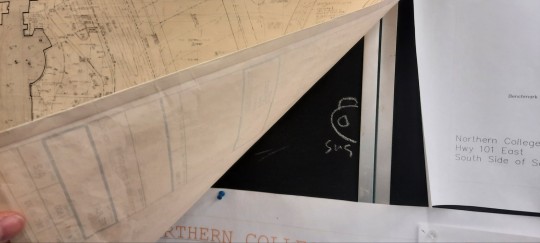

Angy amosus
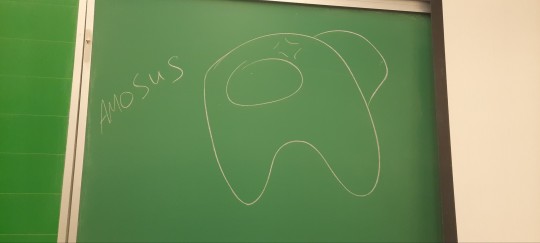
The final math class

That's all for me, have a sussy summer!
0 notes
Text
Valuation of Nutrient Utilization, Protein Requirement and Proximate Assessment of an Ecotype Tilapine ‘Wesafu’ Fingerlings Reared in Earthen Pond

Authored by: Albert O Amosu
Abstract
This study was conducted to evaluate the nutrient utilization, protein requirement and proximate analysis of Wesafu from fry to fingerlings in an earthen pond. The experimental fish were monitored for comparative analysis and growth performance using commercial feed (Coppens® 0.2mm) and wheat flour in formulating feed with 30%, 35%, 40% and 45% crude protein levels. Fry were fed thrice daily at 8am, 12 pm and 4pm with 5% body weight for 8 weeks. Samples of experimental diet and fingerlings were analyzed for proximate composition while growth performance and nutrient utilization of diet were evaluated using growth indices such as Weight Gain (WG), Percentage Weight Gain (%WG), Specific Growth Rate (SGR), Food Conversion Ratio (FCR), Gross Feed Conversion Efficiency (GFCE), Protein Intake (PI), Protein Efficiency Ratio (PER). The results revealed that the highest cumulative weight gain (10.58 ± 0.12) was recorded in fry fed 45% crude protein diet while the lowest (6.58 ± 0.21) was observed in the 30% crude protein diet .There were no significant differences (p>0.05) in specific growth rate, food intake, food conversion ratio, gross food conversion efficiency and protein efficiency ratio while there were significant differences (DNMRT; ANOVA; df = (n-1); p < 0.05) in weight gain, protein intake. This study indicated that a diet containing 45% crude protein appear to be suitable for rearing Wesafu fry to fingerlings in earthen ponds.
Keywords: Aquaculture; Cichlids; Diet; Ecotype; Fingerlings; Growth; Nutrient; Wesafu
Abbreviations: WG: Weight Gain; FCR: Food Conversion Ratio; GFCE: Gross Feed Conversion Efficiency; PI: Protein Intake; PER: Protein Efficiency Ratio; SGR: Specific Growth Rate; LSD: Least Significance Difference; DNMRT: Duncan’s New Multiple Range Test; SE: Standard Error
Introduction
As the global population continues to rise, the need for sustainable alternative sources of protein also increases [1]. Research estimated that the worldwide requirement for food will increase up to 50 % by 2030 [2]. Juxtaposing the production input efficiencies of aquaculture versus several of fisheries and terrestrial agriculture systems shows that aquaculture is among the world’s most efficient mass producer of protein [3]. Protein is the most important constituents of fish and also the most expensive constituent of fish feed and global expenditure exceeds (7.05 million MT) €1bn per annum [4,5]. Aquaculture production is growing at a rate of nearly 9% per annum [3,6]. As wild fish stocks decline, the aquaculture industry faces a massive challenge to identify cost-effective and environmentally friendly alternatives to fish production on which it is so heavily reliant [1,7]. Cichlid aquaculture has the potential to provide a solution to this problem as it is relatively underexploited in Nigeria and can be cultured in a sustainable manner [8]. Cichlids are one of the most diverse fish species and widely cultivated fish families in the world, though their natural distribution was confined to North America, Central America, South America, Africa and the Mid East [9]. The family has been introduced into various continents including Australia [10]. Wesafu is an indigenous ecotype cichlid, very important specie of the fisheries of Lagos coastal waters in Nigeria [11-12]. The diversity of an unidentified cichlid of great abundant in Epe Lagoon commonly referred to as Wesafu and the large size cum weight it attains in the wild influence the drive for possible domestication, culture and exact identification and naming of this specie [13-14]. Several research studies have been conducted on this indigenous specie such as Age and growth, Aquaculture system, Characterization, food and feeding habits, nutrition, meristic and morphometric characters among others [11-22].
Tilapines are Cichlids with fast growth, resistant to diseases and handling, easy to reproduce and are able to tolerate a wide range of environmental conditions. They are widely cultured in tropical and subtropical regions of the world and constitute the third largest group of farmed fin fish with an annual growth of about 11.5% [3,23-25]. Proper feeding management is therefore a necessary tool for successful tilapia culture. Nutrition and feeding play important role in sustainable cichlid aquaculture therefore, feed resources as well as costs continue to dominate aquaculture needs. Feed accounts for 40-60% of the total production costs in aquaculture, with protein sources accounting for a significant proportion of this cost [1,3,22-24]. Frys and fingerlings require diets higher in protein, lipids, vitamins, minerals and lower in carbohydrate as they are developing muscles, internal organs and bones with rapid growth. Adult fish needs more calories of fats and carbohydrate for basal metabolism and a smaller percent of protein for growth [19]. The energy needs of the fish can be met by less expensive lipid and carbohydrate sources. The protein requirement of tilapia was estimated to be from 25% to 45% of diet [26,29-34]. Under natural condition, Tilapia is predominantly an herbivore and a detritus feeder. This means that they can provide high quality protein, suitable for human consumption from less protein sources [35]. Inabilities to develop suitable commercial and improved strain of tilapias that will grow to table size in good time are few of the problems militating against a viable tilapia industry in Nigeria [14]. The problem of precocious sexual maturity and unwanted reproduction has long been accepted as a major constraint to further development and expansion of tilapia culture in Nigeria. In addition, unwanted reproduction which leads to excessive recruitment (overpopulation), particularly in ponds, resulting in competition for available food and space resources as well as the ease of reproduction represents the principal problem in the optimization of yield in tilapia culture. Therefore, this research was geared towards determining the growth performance, dietary protein requirement and nutrient utilization of this economic important ecotype cichlid. The increased intensification of culture method for warm water fish such as tilapia has necessitated the provision of balance ration to satisfy the dietary requirement. Despite the commercial values of Wesafu, a tilapia highly priced fish in Lagos, Nigeria due to its tasty flesh and large size of over 1500g in the wild, little information exists on its nutritional requirements, in cultural practices yet it has culture potential in the country.
Materials and Methods
Experimental fish
One thousand four hundred and forty (1440) fry of average weight of 0.93 ± 0.16 were used in determining the protein requirement of Wesafu. The fish was raised from fry to fingerlings stage at Seg farm a private aquaculture farm in Topo village (6°25’0’’ N; 2°55’59’’ E) (Figure 1) on the West Coast of Badagry, Lagos, Nigeria. Fry were weighed and stocked in hapas. Prior to feeding trials, the experimental fish were starved for a day (24h) to ensure that their guts were emptied.
Experimental Design
Twelve (12) hapas (1 × 2 ×1.5m) were placed in earthen pond were used which was conducted in four stages:
a) Fry fed with 30% crude protein represent A in triplicate
b) Fry fed with 35%crude protein represent B in triplicate
c) Fry fed with 40% crude protein represent C in triplicate
d) Fry fed with 45% crude protein represent D in triplicate The fish were divided into one hundred and twenty (120) fry, stocked per in twelve different hapas in three replicates of 30%, 35%, 40% and 45% crude protein level and fed at 5% body weight. The 5 % the daily ratio was divided into 3 equal parts and fed at 8a.m, the second portion at 12p.m and the third portion at 4p.m. Each unit of experiment lasted for 8 weeks. Coppen 0.2mm feed was used with a protein content of 56% (Manufactured by Alltech Coppens Aqua Center, Germany) and wheat flour of 12% to formulate the diets using Pearson square method. All these hapas were placed in earthen pond in the farm and were covered with net to prevent the fish from escaping.
Determination of growth performance and nutrient utilization
Weight gain (wg)
The weight gain by fish was calculated from the differences between the final mean and the initial mean weight that is the final mean weight of fish at week eight subtracted from the initial mean weight of fish at week zero [36].
Weight gain (WG) = final weight (W2) – initial weight (W1) WG = (W2) – (W1)
Where:
W2 = Final mean body weight (g)
W1 = Initial mean body weight (g)
Percentage Weight Gain (%WG)
The percentage weight gain was calculated from the formula according to [14].
% weight gain = (X2 ) – (X1)×100 / (X1)
where:
X2 = Final mean body weight (g)
X1 = Initial mean body weight (g)
Specific Growth Rate (SGR)
Specific growth rate was calculated according to [36] as
SGR = Loge W2 – Loge W1 / T2 – T1
where:
W2 = Weight of fish at time T2 in days
W1 = Weight of fish at time T1 in days
Loge = Natural log of base e
Food Conversion Ratio (FCR)
Food conversion ratio according to[36] as FCR, expressed as the proportion of dry food fed per unit live weight gain of fish:
FCR =Weight of dry fed (g) / Live weight gain (g)
Gross Food Conversion Efficiency (GFCE)
The gross food conversion efficiency was calculated according to [36] as the percentage of the reciprocal of feed conversion ratio.
gFCR = 1×100 / FCR
Protein Intake (PI ) = Total feed intake × % protein in the diet Protein Efficiency Ratio (PER) = weight gain / Protein intake
Nutrient Evaluation of Experimental feed and fish
Samples of experimental feeds and fish were analyzed for their proximate composition according to the methods of [37].
Moisture content
The moisture content of the different fry samples were determined
% Moisture content = M1 − M2 / M1 − M0 × 100
where
M0 = Weight in g of fish and lid
M1 = Weight of g of dish, lid and sample before drying
M2 = Weight in g of dish, lid and sample after drying
M1 − M0 =Weight of sample prepared for drying
% dry matter content = 100 − % moisture content
Crude protein
Determination of crude protein was done using total kjeldahl nitrogen method.
% Nitrogen = 0.0075× A / B ×C
where
A = Mg /L reading displayed
B = g – sample digested
C = ML digest analysed
Determination of crude fat or lipid
The measure fat content of all the soluble materials present was determined according to [38].
% Fat = W3 –W2 /W1
where
W3= Weight of the cup with the extracted oil.
W2 =Weight of the empty cup
W1 =Weight of the sample.
Determination of the total ash
The percent of ash was calculated as follows:
Percentage (%) of ash = (weight of ash / weight of sample)×100 % Ash = (W2 /W1)×100
where,
W1 = Weight of sample (g)
W2 = Weight of ash (g)
Determination of crude fibre
The amount of the crude fibre content in the sample was determined using the acid/base digestion process [39].
% Crude fiber =Weight A −Weight B / Sample Weight
Where
Weight A = Weight of crucible + dried residue
Weight B = weight of Crucible + residue ashed
Statistical Analysis
All data collected were presented as mean values of each determination ± standard error (SE). Analysis of variance was performed using one way ANOVA procedure. Differences between the mean values of the treatments were determined by the least significance difference (LSD) test and the Duncan’s New Multiple Range Test (DNMRT). The significance was defined at p < 0.05.
Results
The result of the experiment shows that there was increase in the weekly growth rate, weekly feed intake, and food conversion ratio, protein intake while there was decrease in the weekly Specific Growth Rate, Gross Food Conversion Efficiency and the Protein Efficiency Ratio. It was observed that the weekly feed intake consumed increased per week in the following sequence Diet 1 > Diet 2 > Diet 3 > Diet 4 (Table 1). The weekly mean of total feed consumed showed a progressive increase throughout the experiment and there was significance (p<0.05) difference throughout the experiment. The weekly mean weight in Figure 1 shows increase trend from week one to week eight and there was significance difference (p< 0.05) between the crude protein levels throughout the experiment.
The weekly mean of total feed consumed showed a progressive increase throughout the experiment and there was significance (p<0.05) difference throughout the experiment.
No significance difference (p > 0.05) observed in weight gain for week 6 and 7 and significance difference was observed throughout the remaining weeks. Also, there was no significance difference (p > 0.05) observed between specific growth rates of the dietary protein level in week five and seven and there was significance in the rest of the week. The weekly specific growth rate decreases throughout the duration of the experiment (Figure 2).
No significance difference occurred (p > 0.05) in week 3, 6, 7 and 8 and significance difference was observed in week 1, 2, 4 and 5 (Figure 3). The food conversion ratio increases throughout the experiment. It was reveal that Gross Conversion Efficiency decreases throughout the duration of the experiment and significance difference (p < 0.05) was observed from week seven to week 8 whereas no significance difference observed from week 1 to week 6 (Figure 3).
There was significance difference (p < 0.05) throughout the experiment and the protein intake increases throughout the experiment. Significance difference (p < 0.05) was observed in the protein efficiency ratio expect for week four where there is no significance difference in the fry fed with the four experimental diet (Figure 4). No significant differences (p > 0.05) in specific growth rate, food intake, food conversion ratio, gross food conversion efficiency and protein efficiency ratio while significant difference (p < 0.05) in the weight gain, protein intake (Table 2).
Table 3 shows proximate analysis of feed Percentage crude protein had the highest mean value in each Diet 34.37 ± 0.12, 28.47 ± 0.25, 26.86 ± 0.26, 24.04 ± 0.48, the lowest value was observed in Fat content for Diet 1, Diet 2, Diet 3 and Diet 4 had 7.31± 0.12, 5.22± 0.05, 5.16 ± 0.05 and 4.81 ± 0.07 respectively. The proximate analysis of fish sample in each Diet; the percentage crude fiber had the highest mean value of 40.18 ± 4.79, 47.52±0.55, 45.76±0.08, and 43.95±0.39 and fat content has the lowest Diet of 2.91 ± 0.04, 2.69 ± 0.04, 2.19 ± 0.08 and 2.24 ± 0.09 (Table 3). The experimental earthen pond water temperature, pH, dissolved oxygen and total alkalinity ranged from 27-28.5°C, 6.8-7.5, 5.8- 6.4ppm and 120-128ppm, respectively during the entire rearing period.
Discussion
The highest cumulative weight gain was recorded in fry fed on Diet 1(45%) with 10.58 ± 0.12 while the lowest was observed in fry fed with diet 4(30%) with 6.58 ± 0.21, similar findings have been reported by different authors for different tilapia species that the dietary protein requirements of several species of tilapia have been estimated to range from 20% to 56% [33,34,40-42]. The specific growth rate decreased throughout the duration of the experiment. The highest food conversion ratio was observed in the fry feeds with Diet 2 crude protein with the value of 0.32 ± 0.57 cumulative. The other feeds 30%, 35% and 45% crude protein recorded 0.25 ± 0.04, 0.32 ± 0.57 and 0.25 ± 0.04 respectively which were similar to [43]. The highest cumulative gross food conversion efficiency was recorded in the fry fed with 532.14 ± 131.12 and the lowest gross food conversion efficiency was recorded in fry fed with 35% crude protein with the value of 412.48 ±105.57 corresponding to the observations of [41,42]. The fry fed on Diet 2 crude protein recorded the highest protein efficiency ratio and fry fed with Diet 1 crude protein diet recorded the lowest protein efficiency ratio. PER, in the present study, was significantly affected by protein levels and manifests that protein utilization was obtained at low protein level. The decrease of PER with increasing dietary protein level have also been reported by different authors for different tilapia species [44,45]. This was mainly because more dietary protein is used as energy when high protein Diets are fed to fish [30,40]. The highest cumulative protein intake was recorded in the fry fed on on Diet1, having a value of 8.75 ± 1.43, this was followed by Diet 2 with the value of 7.40 ± 1.34. Frys fed with diet 3 with the value of 5.17 ± 0.91 and this was observed to the lowest experimental Diet which was fry fed with Diet 4 which recorded 3.74 ± 0.71. The proximate analyses of sample feed fed fry of Wesafu showed that the percentage crude protein was highest in the feed with 45% having a value of 34.37 ± 0.12 and the lowest was observed in feed with 30% with value of 24.04 ± 0.48. The formulated experimental feed with 40% recorded 28.47± 0.25 while 35% recorded 26.86 ± 0.26. Fry on proximate analysis recorded better productive protein values in the 45% feed with the value of 19.99 ± 0.35, 35% feed with value of 18.26 ± 0.12 followed by 40% feed with 17.61 ± 0.08 and 30% with 17.71 ± 0.17.
Conclusion
This study clearly indicated that diet containing 45% crude protein bodes well for cichlid aquaculture industry and appear to be suitable for rearing Wesafu fry to fingerlings in earthen pond with the potential to be a successful feed and alternative replacement for coppens in tilapine feed formulation.
To Know More About Oceanography & Fisheries Open Access Journal Please click on:
https://juniperpublishers.com/ofoaj/index.php
For more Open Access Journals in Juniper Publishers please click on:
https://juniperpublishers.com/index.php
#Juniper publishers#Open access Journals#Peer review journal#Juniper publisher reviews#Juniper publisher journals
0 notes
Text
How Super Eagles Rated In Draw Vs Ghana
Completesports.com’s ADEBOYE AMOSU rates the performance of Super Eagles players in their 2022 FIFA World Cup playoffs tie against the Black Stars of Ghana in Abuja on Tuesday night.
https://www.completesports.com/how-super-eagles-rated-in-draw-vs-ghana/
0 notes
Text
AVERAGE: Super Eagles’ Rating Vs Portugal In Lisbon
AVERAGE: Super Eagles’ Rating Vs Portugal In Lisbon
AVERAGE: Super Eagles’ Rating Vs Portugal In Lisbon
Completesports.com’s ADEBOYE AMOSU appraises the performance of Super Eagles, player-by-player, in their 4-0 defeat against La Selecao of Portugal in a friendly game at the Estadio Jose Alvalade, Lisbon on Thursday night.
FRANCIS UZOHO 4/10
Conceded four times in the game. He made a superb save to deny Jooa Felix in the second half. His ball…
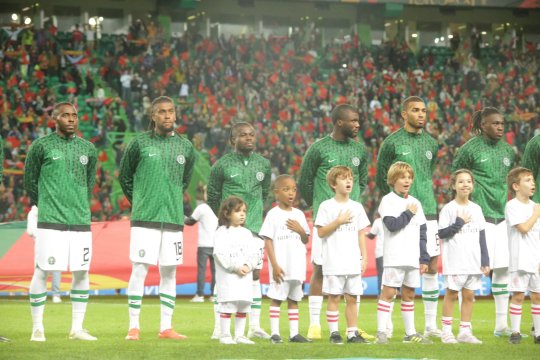
View On WordPress
0 notes
Text
[ad_1]
The newly posted Resident Electoral Commissioner in Oyo State, Dr. Adediran Rahmon Tella, has urged the people of the state to expect credible elections in 2023, Njenje Media News reports.
Tella, made this disclosure on Wednesday in Ibadan, the state capital.
He had earlier served in Ekiti State.
The newly posted REC, while meeting staff of the Independent National Electoral Commission (INEC) in the state promised to conduct credible, fair and free elections in 2023.
Administrative Secretary of INEC Biodun Onikate-Amosu in a statement made available to DAILY POST explained that Tella has pledged to ensure that the 2023 elections in the state are free and credible.
Onikate-Amosu said Tella was deployed to the state on Tuesday, 15th November 2022.
[ad_2]
0 notes
Text
By John Danjuma
For declaring support for the governorship candidate of ADC, Barrister Biyi Otegbeye, a chieftain of the opposition African Democratic Congress (ADC), Chief Olawale Adebajo, has commended the former governor of Ogun State, Senator Ibikunle Amosun.
[caption id="attachment_31356" align="alignnone" width="1280"] Senator representing Ogun Central Senatorial District in the National Assembly Ibikunle Amosun[/caption]
Amosun, who represents Ogun Central Senatorial District in the National Assembly on the platform of the All Progressives Congress (APC) recently expressed his support for Otegbeye while speaking on BBC Yoruba programme.
Read also>>>Put aside ethnic, religious differences, vote for patriotic Nigerian – Obi
The support for opposition governorship candidate has, however raised some dust and caused some panic within the APC circle and the state governor, Prince Dapo Abiodun, has reacted saying he would not be deterred by the move.
Speaking with newsmen Friday on the development, Chief Adebajo described Amosun's move as patriotic, adding that "Otegbeye is a man of high integrity."
According to Adebajo, Otegbeye is an accomplished lawyer and a successful Chartered Insurer with a Masters Degree in Finance Management, has been described as an attempt to revive a culture of excellence in leadership that Ogun state is known for.
He noted that Amosun has shown an uncommon consistency and unwavering commitment to ensure the emergence of a governor of Yewa-Awori extraction.
"Since the creation of Ogun state in 1976, no one from Ogun West, which is populated by Yewa-Awori people, has been elected governor while the position has been rotated between the other two Senatorial Districts, Ogun East and Ogun Central.
“Former Governors of the state have verifiable educational background unlike Governor Dapo Abiodun whose educational background is enmeshed in controversies.
In 2015, Abiodun claimed he graduated from the University of Ife, now Obafemi Awolowo University. However, in 2019, he said he did not graduate from the same institution.
“If discipline and dogged determination had a face, it would be Senator Ibikunle Amosun and Barrister Biyi Otegbeye. The two have shown levels of resilience, courage and persistence in their political career.
“Without doubt, Amosun has shown a great level of courage and conviction in aligning with Asiwaju Bola Tinubu’s unity agenda. Since Otegbeye’s ADC party recently suspended and expelled its Presidential Candidate, this move has given Otegbeye a reason to show a total support for Tinubu just as Amosu. The three chords are complete with Tinubu in the centre: Tinubu, Amosun and Otegbeye”, Adebajo noted.
Comparing the harmony between President Muhammadu Buhari and Vice President Yemi Osinbajo with that of Amosun and Otegbeye, the ADC chieftain said in them Ogun people have found men of honour.
“The way Osinbajo and Buhari have managed their faith devoid of religious rancour can be likened to the chord that binds Amosun and Otegbeye. The former are bound by unity of faith. Same value system also binds Amosun and Otegbeye, irrespective of their actual stance. Their synergy is dynamic in its diversity.
“The good people of Ogun state have found favour in the sight of God with the gift of Asiwaju, Amosun and Otegbeye, an alliance that will become political thematic for further studies. These patriots are genuine loyalists: their commitment to people and to a good cause does not depend on favours or benefits. Amosun’s support for Otegbeye is solely because he has seen what others have not seen: a fertile land who is ready to serve the people of Ogun state. This coalition and affinity are examples of unity of purpose.
“This unexpected decision is still causing some uproar in Ogun State, owing from Amosun's known affection for Adekunle Akinlade. Since the latter defected to PDP and Amosun decided to take his hands off the political wheels of Akinlade
and people began reflecting on the connecting dot between Amosun and Otegbeye, the glaring similarities between these two no doubt, must have led to this unanticipated political marriage”, Adebajo concluded.
0 notes
Text
Fanzy Papaya – Ala Amosu
Fanzy Papaya – Ala Amosu
Fanzy Papaya — Ala Amosu Mp3 Download.
Songs, Lyrics, Videos, Mp3 Download , Mp4 Download & Instrumental right here on our Big website . Please Kindly make sure to download listen and share with friends.
Always visit our website for latest songs, videos , news & gists
Download Latest Fanzy Papaya Songs / Music, Videos & Albums/EP’s here On…

View On WordPress
0 notes
Text
Super Eagles To Face Costa Rica In Friendly November 9
The Tremendous Eagles of Nigeria will confront Costa Rica in a world pleasant within the San Jose on November 9.
NFF’s FIFA Match Agent, Jairo Pachon informed thenff.com on Thursday that the Tremendous Eagles have been invited to the central American nation as a part of main actions to ship forth the Los Ticos to the FIFA World Cup finals in Qatar.
Learn Additionally: Pleasant: Ajibade To Lead Tremendous Falcons Towards Japan
The sport is scheduled for the Nationwide Stadium in San Jose and can kick off 8pm Costa Rica time (3am, tenth November in Nigeria).
Costa Rica hosted this 12 months’s FIFA U20 Girls’s World Cup finals the place Nigeria’s Falconets reached the quarter-finals, defeating France, Korea Republic and Canada within the group section.
The Tremendous Eagles have one other pleasant lined up towards Portugal in Lisbon on November 17.
Copyright © 2021 Completesports.com All rights reserved. The knowledge contained in Completesports.com will not be revealed, broadcast, rewritten, or redistributed with out the prior written authority of Completesports.com.
About Adeboye Amosu
View all posts by Adeboye Amosu
Supply hyperlink
Originally published at SF Newsvine
0 notes
Text
Court quashes N21bn money laundering charge against ex-Air chief, Amosu
The Federal High Court in Lagos on Tuesday quashed the N21.5bn money laundry charges preferred against a former Chief of Air Staff, Adesola Amosu, and two others by the Economic and Financial Crimes Commission.
The EFCC had on June 29, 2016, arraigned Amosu alongside a former Nigeria Air Force Chief of Accounts and Budgeting, Air Vice Marshal Jacob Adigun, and a former Director of Finance and Budget, Air Commodore Gbadebo Olugbenga, on a 26-count charge.
But they were re-arraigned before Justice Chukwujekwu Aneke in a 13-count amended charge marked FHC/L/280C/16 on money laundering to the tune of N21.5bn.
The defendants were prosecuted for alleged conspiracy and conversion of the funds belonging to the NAF to their personal use.
In a ruling on Tuesday on the application filed by the defendants asking the court to quash the charge brought against them, Justice Aneke granted their prayers, by upholding a preliminary objection challenging the jurisdiction of the court to entertain the case on the grounds that the defendants were serving officers of the military at the time
The judge held, “As officers of the armed forces, they ought to have been first investigated by the armed forces and tried rather than charging them before this court.”
He declared the investigation of Amosu dated January 30, 2015, null and void.
Justice Aneke also quashed the amended charges against the defendants.
Read the full article
0 notes
Text
POLITICS NEWS: Abiodun won 2019 gov poll through rigging - Amosu
POLITICS NEWS: Abiodun won 2019 gov poll through rigging – Amosu
Publish date: 2022-08-06 07:28:51 | Author: Daud Olatunji | Source: punchng.com
Former Ogun State Governor, Senator Ibikunle Amosun has said the incumbent governor, Dapo Abiodun, won the 2019 election through rigging.
Amosun spoke on Friday in Abeokuta while speaking after receiving an award from the Abeokuta Club to commemorate the 50th anniversary of the association.
The former governor had…

View On WordPress
0 notes
Photo

...APC PRESIDENTIAL PRIMARY.., FAYEMI, AKPABIO; ABUBAKAR BADARU; DIMEJI BANKOLE; BOROFICE; IBIKUNLE AMOSU step down for ASIWAJU BOLA AHMED TINUBU., Kudos 🤝 We gonna jamming jamming tonight It's dancing time..., (at Abuja, Nigeria) https://www.instagram.com/p/CehXgWrI0Tw/?igshid=NGJjMDIxMWI=
0 notes